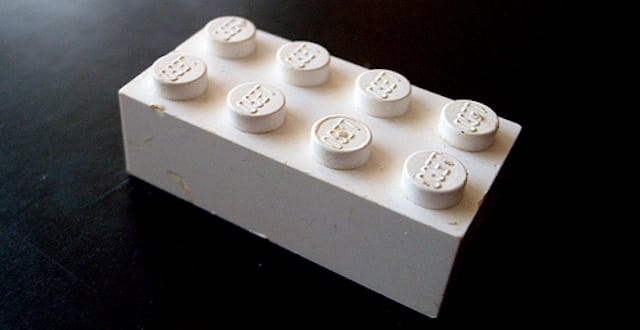What makes a Lego a Lego? A dispatch from the frontlines of the Lego block purism wars.

Lego master builder Mike Doyle has posted an argument for pure mocs, or “my own creations,” Lego jargon for models that are built without the use of instructions. Doyle doesn’t think that models that make use of non-Lego material should count as Lego compositions, because it cheapens the
awe that comes [from] knowing that beauty and complexity can be found within the rules and bounds set up by Lego.
His argument sounds scarily similar to the ludology vs. narrology debates, in which some have claimed that focusing on the narrative elements of games detracts from the game itself. But if that blurb doesn’t convince you, read on.
Altering the nature of Lego is where mocs fail to deliver the unique properties of Lego. Like the rock sculpture above, if the materials used do not follow the meaning of the form in our case a Lego system build the moc will lose its appeal. Materials, like glue and tape break the nature of Lego’s system build approach. Destroying bits (cutting, melting, etc) break the nature of the original bit. Painting pieces break the nature of Lego’s system of colors. Stickers break the nature of the additive properties of a build (that is, combining small things to describe the look of a thing).
This all sounds a bit off the deep end to me. After all, they’re just Legos. But then, I wonder is this what a person with a casual interest in gaming thinks when he stumbles upon a url of game criticism.
[Snap]
-Jason Johnson



